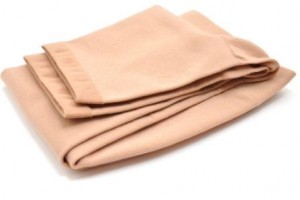The blood in your body doesn’t always flow correctly, and numerous vein diseases can result in circulatory pathways that don’t permit the proper return of fluid to the heart. Although vein removal is a valid treatment for more severe cases of varicose veins and similar diseases, compression therapy is often used as a more conservative alternative to help patients get their health problems under control.
Understanding the Circulation-By What Mechanism[s] Does Blood Return to the Heart?
Have you ever wondered or even thought about this question? Most of our lives we are in an upright position, either sitting or standing. A significant issue is how to deal with gravity, since gravity and high vein pressure are central in any discussion regarding vein dysfunction. Our previous three-part discussion on the issues of blood returning to the heart discussed this question in more detail. You may access those articles by clicking on the following:
What Is Compression Therapy?
Compression therapy in vein treatment is a general term applied to treatments that compress the limbs to combat high vein pressure that has developed or to prevent high vein pressure from developing. There are numerous devices available that work or claim to work by compressing the affected limbs externally.
How Do Compression Therapy Devices Work?
The theory is to counteract the effects of gravity. Gravity is a force that ultimately results in high pressure in the veins and destruction of the one-way valves in the veins which are instrumental in returning blood to the heart from the lower extremities. Proper compression devices fight the force of gravity, thereby preventing or slowing the rise of venous pressure, decrease stretching of the veins, decrease swelling in the limbs, decrease venous symptoms and therefore make the circulation more efficient.
There are many different devices out there—some work and some are bogus. Your <a title="vein specialist" href="http://www.fivestarvein.com/2013/05/28/medical-advice/finding-the-correct-specialist-to-treat-your-veins/">vein specialist should be able to guide you in this regard.
Who Should Use Compression Therapy?
Now that you know what compression therapy is and how prescribed devices work, let’s look at how is a candidate for compression therapy. This list isn’t all encompassing, but covers those most at risk and in need of prophylaxis or preventative measures:
- Those who are pre-and post-operative major surgery
- Those with a family history of vein disease
- Those with a family history of blood clots
- Those in need of treatment for a medical condition
- Those who have had treatment and want to avoid on-going symptoms
- Those who have justa had treatment and want to avoid further treatment [another form of prophylaxis]
Compression therapy is a viable and important means of preventing and treating vein issues. Contact Dr. Robert Ruess of Five Star Vein Institute to discuss your vein issues and see if compression therapy might work for you. He has offices located in Las Vegas and Mesquite, Nevada. Call today to schedule an appointment.


